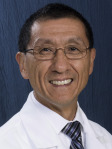

The second set of articles focuses on treatment modalities that are presently not yet part of the standard treatment armamentarium. Our goal is to provide the practicing clinician an update on these modalities. Neuropharmacology has been a focus of investigation for decades. However, due to inconsistent results or limited internal and external validity of the various studies, firm clinical recommendations cannot be presented. In contrast, there are more robust data in support of robotic therapy, especially with respect to upper limb applications. However, the rehabilitation community needs to decide whether the data are compelling enough to integrate this approach into the “standard of practice.” A novel treatment paradigm for hemiplegic gait that many practicing clinicians may not be familiar with is split-belt treadmill training. Although the technique is not ready for clinical implementation, it is an intriguing approach to address step length asymmetry, which reduces propulsive force of the paretic limb, resulting in increased walking speed and efficiency. We then provide updates on mental practice, neuromuscular electrical stimulation, and virtual reality environments, which generally show improvements at the level of impairment but less robust translation to activities. Yet, these interventions may have a role in the treatment of specific stroke survivors, and readers are invited to critically evaluate these approaches and determine relevance to their respective clinical practices.
We conclude this issue with an article on brain stimulation, primarily because the approach represents a necessary shift in the treatment paradigm in stroke rehabilitation. To date, the development of interventions, for the most part, has focused on single-treatment approaches. However, in the face of only modest improvements, at best, there is a growing consensus that more meaningful clinical outcomes can only be achieved through combination therapies. Stimulating the brain via a variety of approaches may prepare the neural substrate for relearning strategies and serve as the prime candidate for testing this hypothesis.
We are very appreciative of all the contributors to this issue and their willingness to share their respective expertise. It is our hope that our colleagues in the field will find this issue helpful as they explore new treatment approaches for their patients. For some, this issue may also lead to insights regarding research ideas that will translate to the development of new clinically relevant diagnostic or treatment options.
Stay updated, free articles. Join our Telegram channel

Full access? Get Clinical Tree







